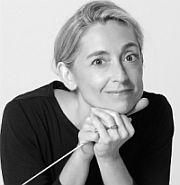The seventh season of the San Francisco Conservatory's BluePrint Project had a deliberate political cast to it. The last several months were, as Artistic Director Nicole Paiement's season-introductory note put it, “a time of economic uncertainty, war, environmental destruction, and a highly consequential presidential election.” And the last program of the BluePrint season, performed Saturday night in the Conservatory's Caroline H. Hume Concert Hall, hewed to the theme, featuring a newly commissioned work (David Garner's Shards) on the subject of war.

The other four pieces also might be linked one way or another to the theme, but they shared another, and more surprising, characteristic. Their composers were all born within few years of one another.
It was something that leaped out from the printed program. Who thinks of Terry Riley, George Crumb, Sofia Gubaidulina, and Toru Takemitsu as belonging to a generation? But there it was: Crumb born in 1929, Takemitsu 1930, Gubaidulina 1931, Riley 1935 (his printed bio in the program said 1929, which made the fit, eerily, even tighter). You might be able to find four more different composers born in that stretch if you tried. But here the variety in one dimension, and uniformity in another, seemed to be happenstance — and was all the more interesting for it.
Riley's piece, which came first, was Y Bolanzero, for guitar ensemble (here, five guitars and two bass guitars, the latter amplified). David Tanenbaum conducted the Conservatory Guitar Ensemble, and one thing was obvious not far into the piece: This is heaven-sent music, if you have a studio full of talented guitarists and need something for them to play all together.
The piece has one of those subtly off-kilter grooves (the meter is 6+5) and, for most of its length, a single pitch set like a raga, but within those bounds every part has liberty, and everyone gets a lick in (actually, given the time span, many licks each). Some places feel static, if by design, and the trajectory isn't all one direction, either: At a couple of points in the interior, some players drop out and the texture gets much sparer. The guitarists play elaborate individual solos, fitted into the groove. The bassists have the simplest parts, but also — to judge by their facial expressions — much the most fun.
Crumb's Ancient Voices of Children, which followed, is a genuine last-half-of-the-20th-century classic, and therefore a piece I'm half-ashamed to confess that I'd never heard before. But I was, if anything, too well prepared by the Crumb I have heard. The virtuosically elaborate vocal lines, studded with phonemes and other effects; the “prepared” piano and harp; the mandolin with half the strings tuned a quarter-tone away from the others; the bent pitches; the subtle percussion, not without Tibetan prayer stones and Japanese temple bells; the singing into the resonating strings of the open piano; the occasional vocalizations from the instrumentalists, and the odd instructions to move to this or that other place, or to play a different instrument (the mandolinist doubles on musical saw, most beautifully here) — all that's just Crumb as I know him from other pieces.

What surprised me, a bit, was how specifically dated it was. Not “dated” in the sense that it belonged to another time and therefore was passé — heck, I'm a classical musician, and we don't think like that. No, just “dated” as in “this is so 1970” — in the way that Haydn's stormier minor-key symphonies are “so 1770.” There was a time and place at which this was a way to be intensely meaningful. Even the fragment of Bach's Bist du bei mir, played on a toy piano against a dim, clashing chord at the end of a sung verse about the death of children, must once somehow have seemed more profound than bathetic.
It didn't seem that way to me on Saturday, but there is no denying that Ancient Voices remains fascinating music. SFCM faculty mezzo-soprano Wendy Hillhouse was the main vocal protagonist, with the young soprano Madeline Matej singing the child's part (from offstage, until the very end). Among the others, the standout was oboist Benjamin Opie, conjuring an astonishing range of sounds from his instrument, and leaving the stage at the end (at the expense of a well-deserved solo bow).
Seeking Out Comfort
Gubaidulina's Concordanza, which followed the Crumb after intermission, might itself be “so 1971” (it dates from the year after Ancient Voices), but only on a different continent. Gubaidulina's compact but pungent ensemble of 10 (one each of the orchestral strings, plus a wind quintet, plus percussion) scurries around searching for comfort — sometimes erupting in fury, sometimes collapsing, sometimes striving against itself.The piece has points of comparison with the Crumb, but the moment you look at them they dissolve. Gubaidulina, for example, also demands vocal sounds from her players, though the effect is completely different. In the Crumb the isolated syllables sound like components of a ritual. Gubaidulina has her players let off a stream of vowelless sibilants and plosives that sound like an unearthly percussion instrument.
The piece is episodic, wayward, and sometimes uncannily resonant with other pieces probably more familiar to us than to her own audience (a bleak but consonant string duet interrupted by raucous winds recalls Ives' Unanswered Question). The ending, in which the players suddenly converge on a single pitch, seems abrupt, and I imagine was meant to.
Takemitsu's 1982 Tree Line used the evening's biggest ensemble, and probably for that reason was originally slated to come last, but after the program was printed it was swapped with the premiere, David Garner's Shards. The Takemitsu is scored for, I think, 17 or 18 players — five strings, five woodwinds, four brass, harp, piano, and percussion — but owing to doublings (alto flute, bass clarinet, contrabassoon, celesta), mutes for strings and brass, and cunning orchestration, it gives the impression of a larger, but ever shifting, ensemble.
There were few recurring motives to grasp. Still, the music seemed, not amorphous, but only nonrepetitive. A combination of colors would happen briefly and not recur, in a way that it was impossible not to connect with the title of the piece. (Just so would one pattern of light and shadow happen for an instant below the trees.)
In the end the oboist left the stage and played plaintively from the doorway to the backstage. It was Opie again, sounding as marvelous as he did in the Crumb, and doubtless wondering what it takes to get an oboe gig in a BluePrint concert where you're still visible at the end of the piece.
Sonic Scenes of War
And then at last there was David Garner's Shards, the one work by a composer of a different generation (Garner was born in 1954) and the one receiving its premiere Saturday. Shards is for 13 players (five strings, five winds, harp, and two percussionists). It has no spoken or sung text, but it does have a scenario.
An exhausted soldier, survivor of a cataclysmic fight, is crossing a battlefield. All around him is broken glass, from the windows of buildings or of destroyed vehicles, and the bright glass reflects the lurid light of the smoky air. As he continues, the flashes of light seem to bear sound with them, fragments of old antiwar songs. Shards is meant to adumbrate or suggest that music.
And for an audience primed by the composer's program note, the composer's speech immediately before the performance, and the slides (of scenes of war and its aftermath) that the composer showed during the performance, it did that exceedingly well. How well a listener without all that helpful context would have fared in understanding the intent, I don't know.
The songs whose fragments populate the piece, for one thing, are not all necessarily familiar to most people. I think a San Francisco audience can be counted on to recognize Where Have All the Flowers Gone?, but apart from the Colonel Bogie March (which I confess I'd never associated with the Great War), the other songs here were completely new to me. I wouldn't know a lick from Hello Central, Give Me No Man's Land (credited to Jean Schwartz, 1917), let alone All Quiet Along the Potomac To-Night (J.H. Hewitt, 1863), if it hit me over the head, and I fear others are in the same position.
I was probably in a small minority among the audience Saturday night, but for me Garner's introduction did more to confuse his aims with this work than to clarify them. When he got down to describing the work itself, Garner asked each member of the audience to imagine himself or herself as the soldier in the scenario — where and when the war was didn't matter, nor on what side you had fought. But his remarks opened with a line about the wars in “Iraq, Afghanistan, Gaza, and Lebanon” — wars fought, he said, for “merely political” reasons. That list seemed awfully parochial to me in connection with a work whose message intends to be universal, and in a world ravaged by seemingly pointless, seemingly “political” wars (with tens or hundreds of thousands of dead) even in places that don't routinely make the front pages of our own newspapers.
Shards is certainly a harrowing soundscape. Among the fragments of tunes are heard explosions from the percussion — not ever-louder ones (which would not be even frightening), but booms of seemingly random pacing and strength. The music shifts underneath you with little warning. The slide projections, powerful though they are, aren't its natural accompaniment. (I can imagine a frantic soldier's-eye view of the battlefield, bobbing up and down with each step, panning over the ruined landscape.) The most constant element — and it's not incessant — is the manic figuration of the harp.
I've said before that BluePrint is as strong as any contemporary-music series the Bay Area has. After this program, I have another reason to think so.

